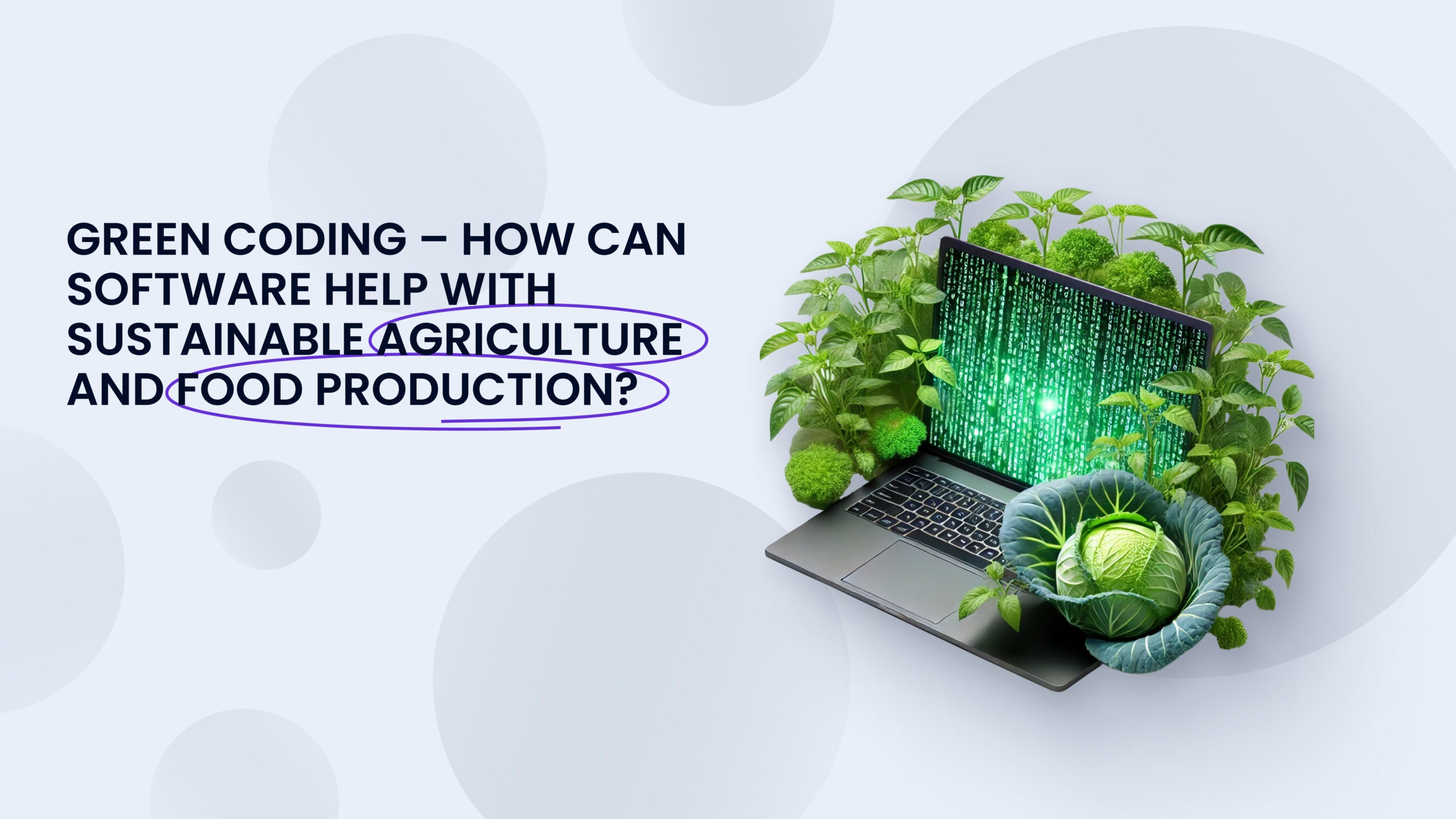
Technologies are changing the world, and there are not many cases in which we can say that these changes are undoubtedly for the better. Green coding and agriculture software are some notorious examples.
Content:
- What is green coding?
- Agriculture software market trends
- Why does the current agriculture sphere need to change?
- Types of agriculture software
- How can quantum computing help revolutionize agriculture?
- How can staff augmentation help you with your agricultural software project?
Over the past 50 years, the agriculture industry has changed in big ways. Modern machinery has made farming faster, more efficient, and able to cover more land, leading to higher productivity. Better seeds, irrigation systems, and fertilizers have also helped farmers grow more crops. Now, we’re entering a new era in farming, powered by data and technology. Tools like artificial intelligence, smart sensors, and data analytics are set to make farming even more efficient by improving crop yields, using water and resources more wisely, and creating a more sustainable and resilient approach to both plant and animal farming. All these happen thanks to green coding.
What is green coding?
Green coding is the development of applications and tools designed to promote sustainability and reduce environmental harm. It focuses on creating solutions that help monitor and minimize carbon footprints, optimize energy and resource use, and support environmentally friendly practices across industries. Examples include software for managing renewable energy systems, tracking emissions, improving waste management, and enhancing sustainable agricultural practices.
Agriculture software market trends
The agriculture software market is projected to grow at a CAGR of 11.7%, driven by increasing technological awareness and environmental concerns. Advanced technologies are boosting the sector, helping agribusinesses manage operations more efficiently, including irrigation, inventory, and crop management.
With the global population expected to reach 9.6 billion by 2050, food production must double, pressuring farmers to adopt smart greenhouses and vertical farming solutions. Urbanization, climate change, and food demand also fuel market growth, with precision farming becoming vital for efficient monitoring and decision-making.
Key trends influencing the market include population growth, climate change, and the digitalization of agriculture, which are expected to drive significant growth in the coming years.
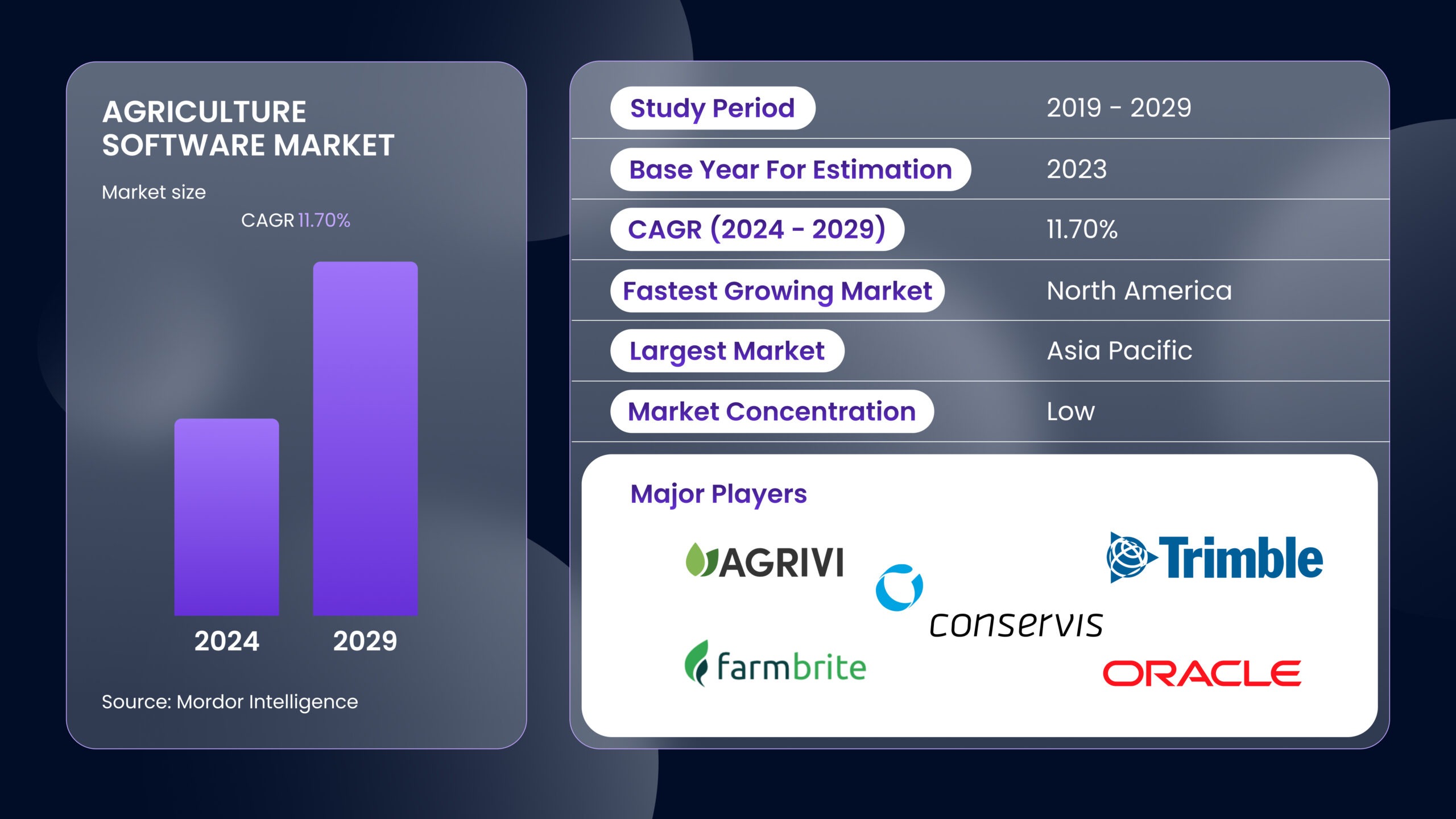
Why does the current agriculture sphere need to change?
The simple answer is that we can’t afford to use more soil for farming than we currently have. The invasion of farmers into wild parts of our planet – the habitat of wild animals – leads to drastic climate changes and has a high potential of bringing more viruses to our tables. The solution is to make the current soil used by farmers as efficient as possible to meet rising global food demands.

Let’s make the reasoning more specific. Why exactly should we transform the way we grow our food?
Biodiversity loss
Overusing chemical fertilizers and pesticides has depleted soil health, while large-scale monocropping has reduced genetic diversity and increased vulnerability to pests and diseases. For example, in the 1960s, American farmers grew a wide variety of crops, including wheat, corn, soybeans, cotton, tobacco, oats, barley, and a range of fruits and vegetables. Today, corn and soybeans dominate the US crop production, often in monocultures. The modern focus on monoculture and industrial farming practices raises concerns about sustainability, biodiversity, and soil health.
Climate change
Agriculture is both a contributor to and a victim of climate change. It accounts for nearly 25% of global greenhouse gas emissions, largely from livestock, rice production, and deforestation. Simultaneously, changing weather patterns, more frequent extreme events, and shifting growing seasons threaten crop yields and food security.
Global food security
With the global population projected to reach 9.7 billion by 2050, there is an urgent need to increase food production by 60-70% (or even double it, according to some sources). However, current agricultural methods are not sustainable enough to meet this demand without causing further environmental harm.
Resource scarcity
Agriculture is a major consumer of freshwater, accounting for about 70% of global water use. With water scarcity becoming a pressing issue in many regions, there is a growing need for more efficient water management practices and technologies.
Smallholder farmers, who produce a significant portion of the world’s food, often face economic hardships due to unstable markets, lack of technological access, and insufficient support. This inequality limits the potential for agricultural innovation and sustainable practices.
Consumer demand for sustainability
Consumers are increasingly demanding food that is not only safe and nutritious but also sustainably produced. This shift pushes the agricultural sector to adopt more environmentally friendly practices and transparency in the food supply chain.
What is the solution?
To address the challenges above, the agricultural sector must embrace sustainable practices, technological innovation, and policy reforms. This transformation is essential to ensuring long-term food security, protecting the environment, and supporting the livelihoods of millions of people worldwide. Modern technologies and green coding are one way to transform our food production.
Types of agriculture software
Agriculture software is a wide range of tools to address the needs of modern farming and agribusinesses. Let’s categorize these software solutions based on their primary functions and the specific aspects of agriculture they support.

Agriculture accounting software
Agriculture accounting software is specialized software designed to meet the agricultural industry’s unique financial and operational needs. It helps farmers, ranchers, and agribusinesses manage their finances, track production costs, optimize resources, and ensure compliance with regulations. This software integrates traditional accounting features with industry-specific tools, providing a comprehensive solution for managing agricultural operations.
If you’re planning to create one, think of its main features:
- General ledger and financial reporting
- Payroll management
- Cost accounting for crops and livestock
- Tax management and compliance
- Input management and product tracking
- Budgeting and forecasting
- Governmental reporting
- Environmental compliance
- Integration with other tools (enterprise resource planning systems, mobile access)
Sounds hard. But take a look at the benefits of agriculture accounting software!
- Enhanced financial visibility. It helps farmers and agribusinesses make decisions by providing real-time access to financial data. It offers detailed insights into the profitability of different crops, livestock, and operations.
- Improved efficiency. Automating accounting and farm management tasks reduces the time spent on manual data entry, minimizes errors, and allows for more efficient resource management.
- Cost savings. The software helps identify areas where costs can be reduced, such as optimizing input usage or improving labor efficiency.
- Better risk management. With tools for forecasting and budgeting, agriculture accounting software helps farmers anticipate potential risks, such as price fluctuations or poor yields, and plan accordingly.
- Regulatory compliance. The software simplifies compliance with tax laws, environmental regulations, and other government requirements, reducing the risk of fines or penalties.
Need some examples?
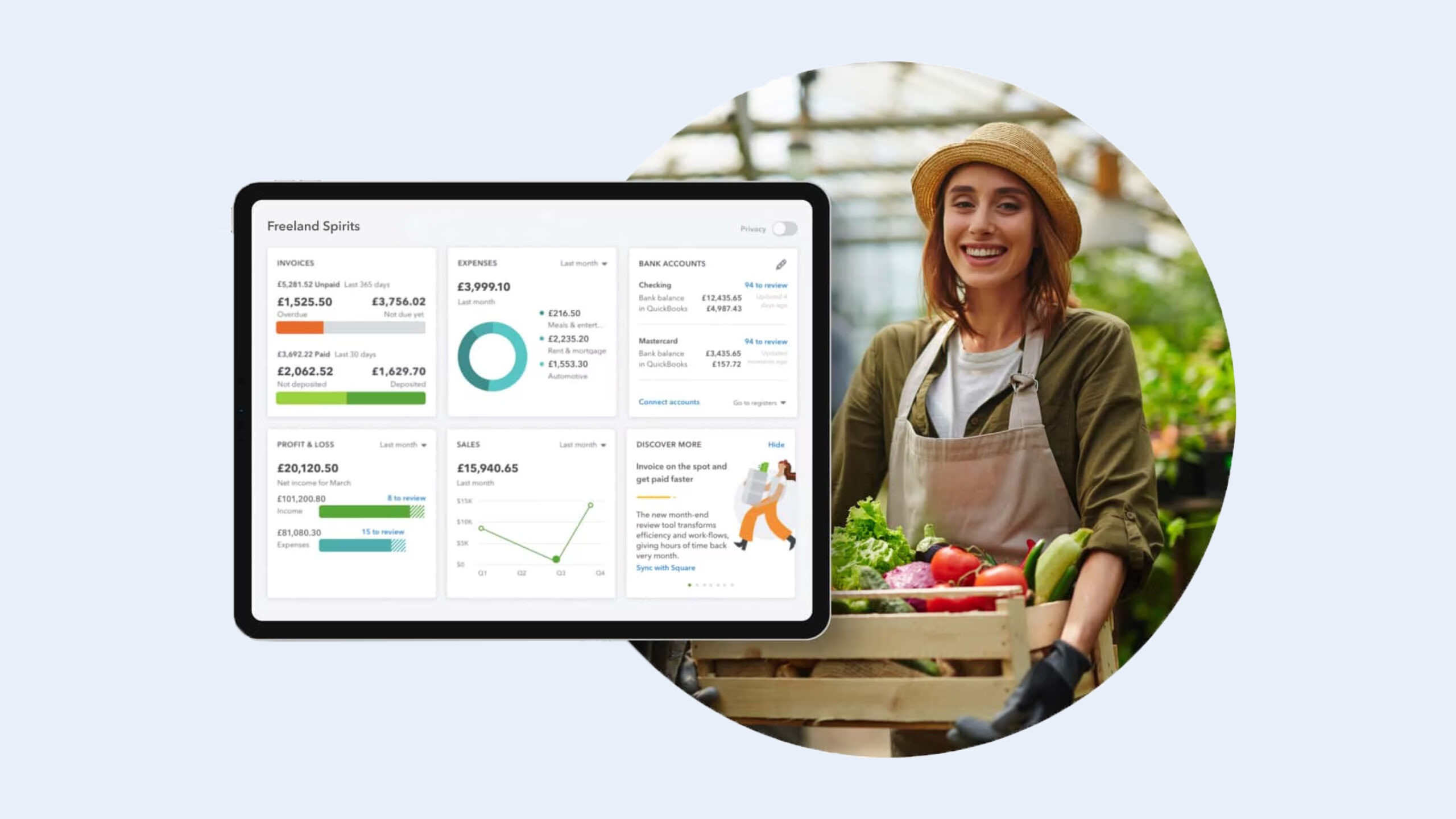
- QuickBooks for Farmers is a widely used accounting software with customization options for agriculture.
- CenterPoint Accounting for Agriculture offers advanced financial management tools for large farms.
- Sage 50cloud provides robust accounting features that can be customized for agriculture, including inventory management and job costing.
- PCMars Farm Accounting Software is tailored for farm accounting and offers features for managing finances, payroll, and inventory.
Precision agriculture software
This type of software uses data analytics, GPS, and IoT devices to optimize farming practices. It enables farmers to apply the right amount of inputs (like seeds, water, and fertilizer) in the right place at the right time, improving efficiency and crop yield. Precision agriculture software deals with soil analysis and mapping, variable rate application, GPS-guided equipment management, and real-time data collection and analysis.
Some notorious examples include Climate FieldView, which offers tools for monitoring field health, tracking weather patterns, and analyzing yield data, and Trimble Ag Software, a suite of tools for precision farming, including GPS-guided planting and harvesting.
Crop management software
This software focuses specifically on planning, monitoring, and optimizing crop production. It helps farmers make decisions about planting, pest control, irrigation, and harvesting. Crop management software offers pest and disease tracking and provides solutions for irrigation management, crop rotation planning, and harvest scheduling.
CropWise Operations is an example of this type of software. It offers satellite imagery, weather forecasting, and crop health monitoring. AGRIVI is another example. It provides a comprehensive tool for crop planning, monitoring, and analysis.
Farm management software
Farm management software is designed to help farmers manage their day-to-day operations. It integrates crop planning, field management, resource allocation, and financial tracking. Its key features include field mapping and crop planning, resource management (water, fertilizer, etc.), yield monitoring and analysis, equipment management, financial management, and reporting.
Among the most outstanding examples are BushelFarm and AgriWebb. BushelFarm focuses on crop planning, weather tracking, and yield analysis, while AgriWebb is designed for livestock management, particularly in large-scale operations.
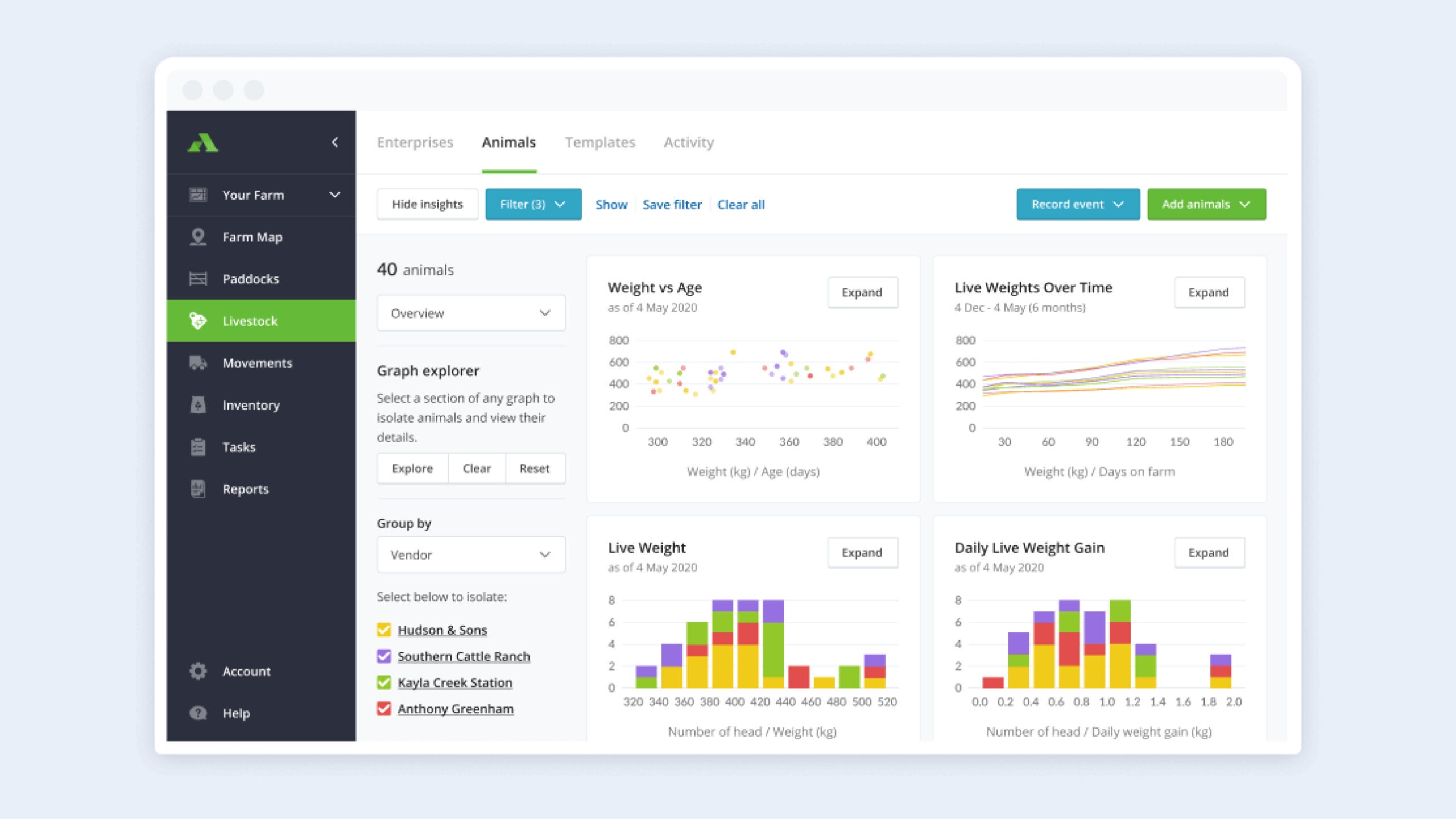
Livestock management software
It is designed for farmers who raise animals and helps track livestock’s health, breeding, and productivity, ensuring optimal management of herds or flocks. Livestock management software offers health and vaccination records, breeding and genetics management, feed and nutrition tracking, and weight and productivity monitoring.
Some good examples of this software include CattleMax, a cloud-based solution for managing cattle herds, focusing on breeding, health, and sales, and HerdDogg, which provides RFID-based tracking and health monitoring for livestock.
Agronomy software
Agronomy software is tailored for agronomists and crop consultants who advise farmers on crop production. It focuses on soil health, crop nutrition, and the application of agrochemicals. Its key features include soil sampling and analysis, nutrient management planning, fertilizer and pesticide application tracking, and crop scouting and recommendations.
Check out Agworld and Decisive Farming to see how it works. Agworld is a collaborative platform for agronomists that offers tools for planning, scouting, and reporting, and Decisive Farming combines agronomy with precision farming tools to optimize input usage.
Irrigation management software
It helps farmers optimize water usage by providing real-time data on soil moisture, weather conditions, and crop water requirements. It aims to reduce water waste and improve crop yield. Irrigation management apps monitor soil moisture, schedule automated irrigation, integrate weather forecasting, and report on water usage.
Try out Jain Logic and CropX to see how this type of software works. Jain Logic provides tools for monitoring and managing irrigation systems with real-time data and analytics, while CropX uses soil sensors and data analytics to optimize irrigation and reduce water usage.
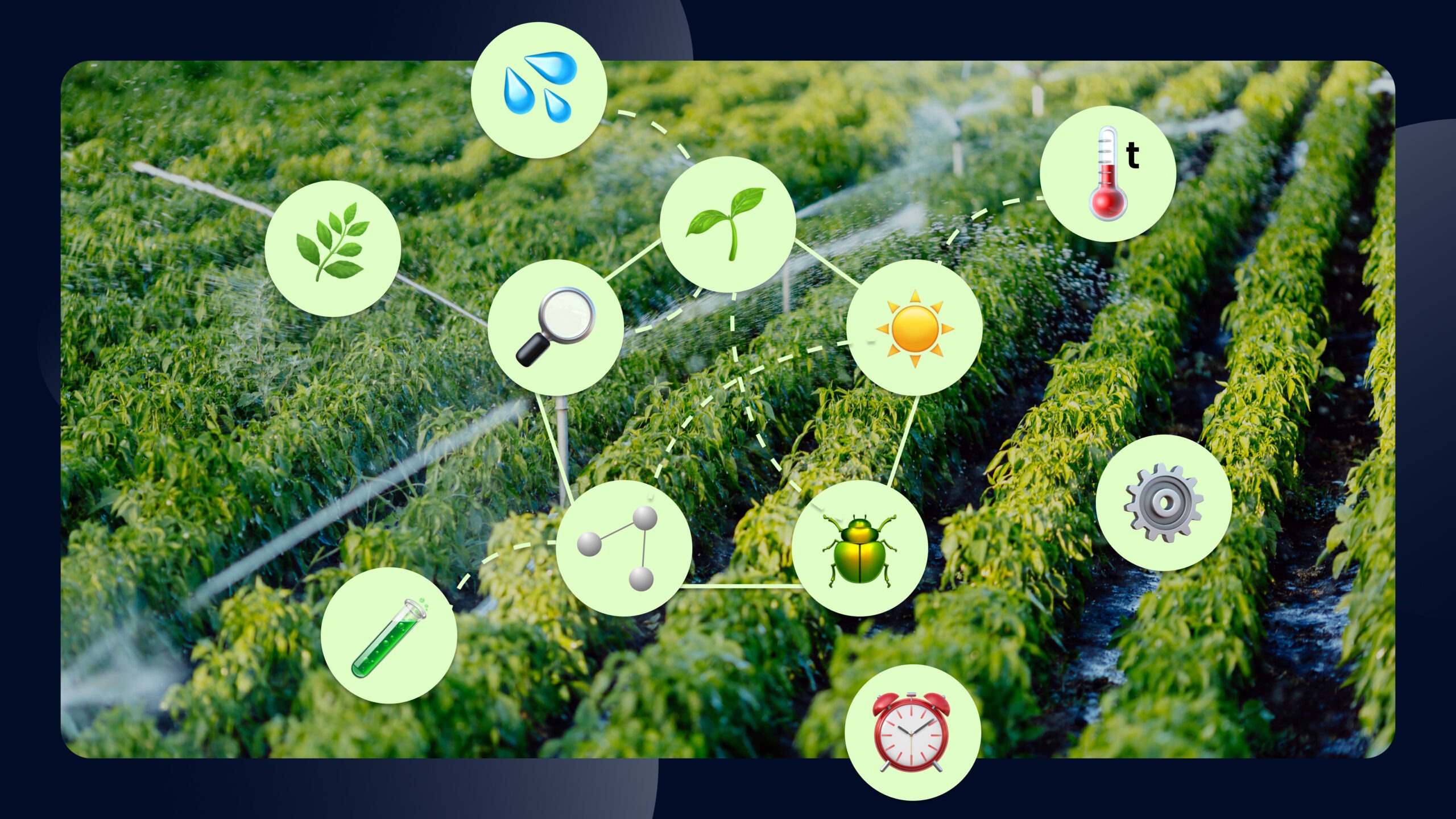
Supply chain management software
This software helps manage the agricultural supply chain, from production to distribution. It ensures the smooth flow of goods, reduces waste, and improves traceability and compliance. Apps for supply chain management offer inventory management, logistics and transportation planning, traceability and compliance reporting, as well as supplier and customer relationship management.
FarmERP and AgriChain are among the top performers in this type of software. FarmERP provides comprehensive supply chain management for large-scale agribusinesses, including inventory tracking and logistics, while AgriChain focuses on improving transparency and efficiency in the agricultural supply chain.
***
Of course, that’s not all. There’s also greenhouse management software for greenhouse operators and drone and remote sensing software to provide farmers with detailed aerial views of their fields. The modern agricultural business has so many problems that you can surely develop a new solution to the growing market and find your place under the sun.
How can quantum computing help revolutionize agriculture?
Quantum computing has the potential to revolutionize agriculture by enabling highly sophisticated and precise modeling of complex systems, such as soil health, crop growth, and climate interactions. One example is its application in optimizing fertilizer use to enhance soil productivity.
In conventional farming, applying the right amount and type of fertilizer at the right time is critical for maximizing crop yield while minimizing environmental impact. However, this is a complex problem due to the numerous variables involved:
- Soil composition varies greatly across fields, even within small areas.
- Crop nutrient needs change over time, depending on growth stages and environmental conditions.
- Overuse of fertilizers can lead to soil degradation, water contamination, and greenhouse gas emissions.
Farmers currently rely on data from soil tests, historical crop yields, and basic algorithms to determine fertilizer application. However, these methods are often too simplistic to account for the full complexity of interactions within the soil-crop system. This can result in suboptimal fertilizer use, leading to waste or insufficient crop nutrients.
Quantum computers excel at solving complex problems with many variables and interactions. They can model the entire soil ecosystem, including the chemical and biological processes affecting nutrient availability and plant uptake. By simulating how different types and amounts of fertilizers interact with various soil types and crops, quantum computers can predict the optimal fertilizer mix for specific conditions.
With quantum-enhanced models, farmers could receive precise, field-specific recommendations on when, where, and how much fertilizer to apply. This precision would be based on real-time sensor data that monitor soil conditions, weather forecasts, and crop growth stages. Quantum algorithms can process this data much faster and more accurately than classical computers, providing actionable insights that were previously impossible to achieve.
Over time, the data gathered and processed through quantum-enhanced agricultural systems could lead to the development of new, more sustainable farming practices. This could include discovering optimal crop rotations, soil amendments, and even new crops better suited to changing climate conditions.
How can staff augmentation help you with your agricultural software project?
Staff augmentation can be a highly effective strategy for advancing agricultural software by providing specialized talent, flexibility, and cost efficiency. Here’s what you get when cooperating with a reliable staff augmentation vendor like MWDN:
- Access to specialized expertise. Agricultural software often requires niche skills such as precision farming, data analytics, IoT integration, and machine learning. Staff augmentation allows you to bring experts with these specific competencies, ensuring your project benefits from the latest industry knowledge and technology.
- Flexibility and scalability. Your green coding project can have varying demands at different stages. Staff augmentation allows you to scale your team as needed, allowing you to manage resources without the long-term commitment of hiring full-time employees.
- Faster time-to-market. By reinforcing your team with skilled professionals, you can accelerate development timelines. This is particularly beneficial if you’re creating something brand new, where timely software deployment can give you a competitive edge.
- Cost efficiency. Hiring full-time staff with specialized skills can be expensive and time-consuming. Staff augmentation offers a cost-effective alternative by allowing you to pay for the expertise you need only when you need it.
Whether you’re developing farm management software, precision agriculture tools, or supply chain solutions, staff augmentation offers the flexibility, expertise, and cost savings needed to successfully complete your agricultural software project.
Content
- 1 What is green coding?
- 2 Agriculture software market trends
- 3 Why does the current agriculture sphere need to change?
- 4 Types of agriculture software
- 5 How can quantum computing help revolutionize agriculture?
- 6 How can staff augmentation help you with your agricultural software project?


